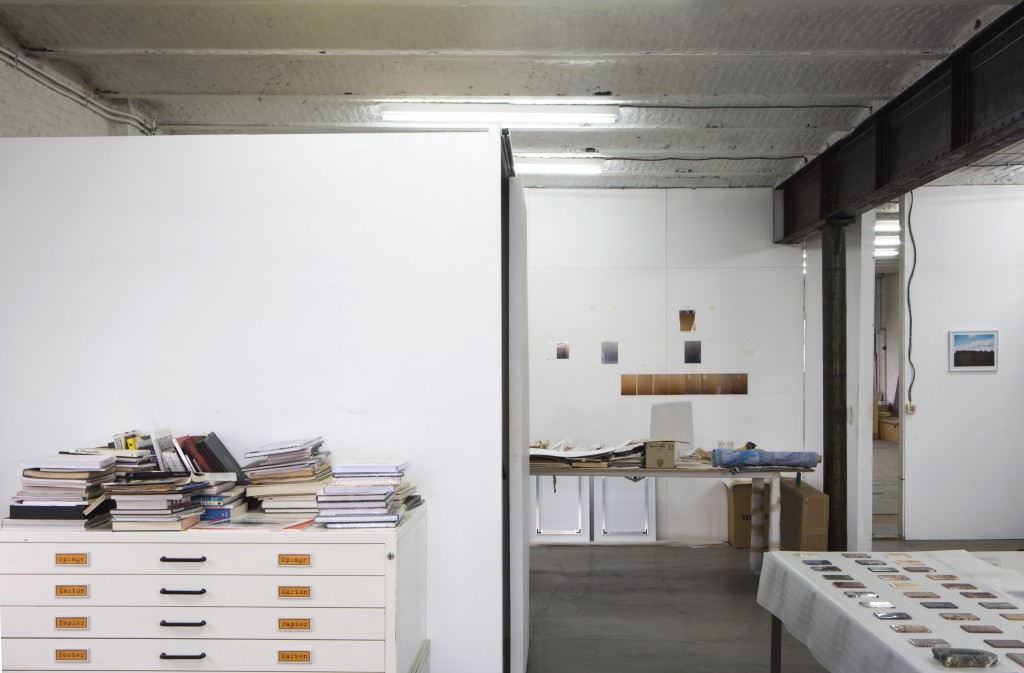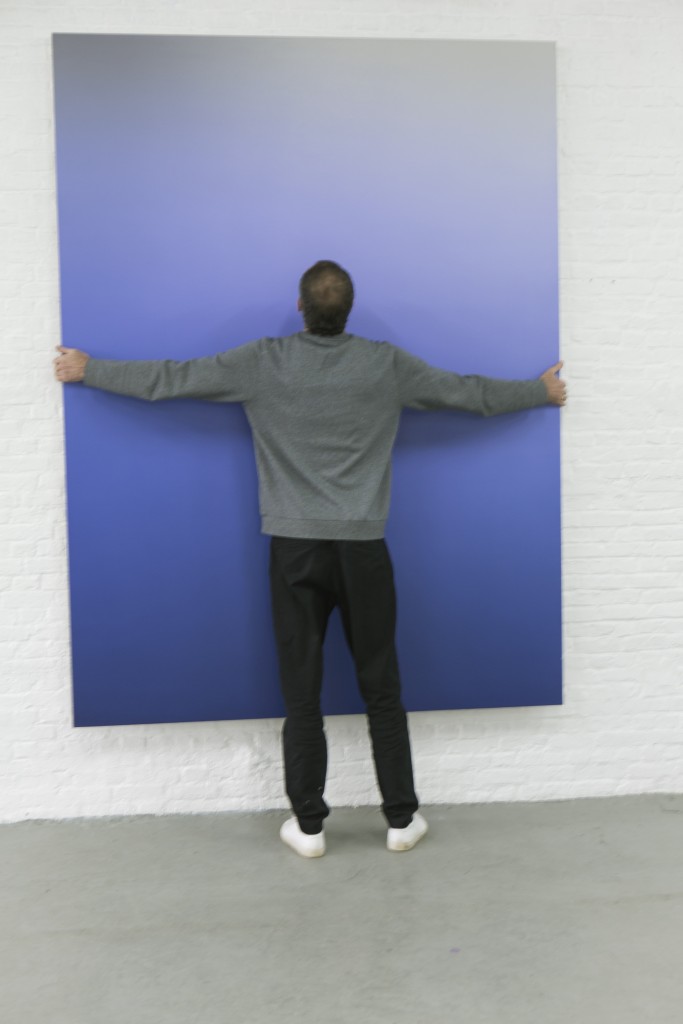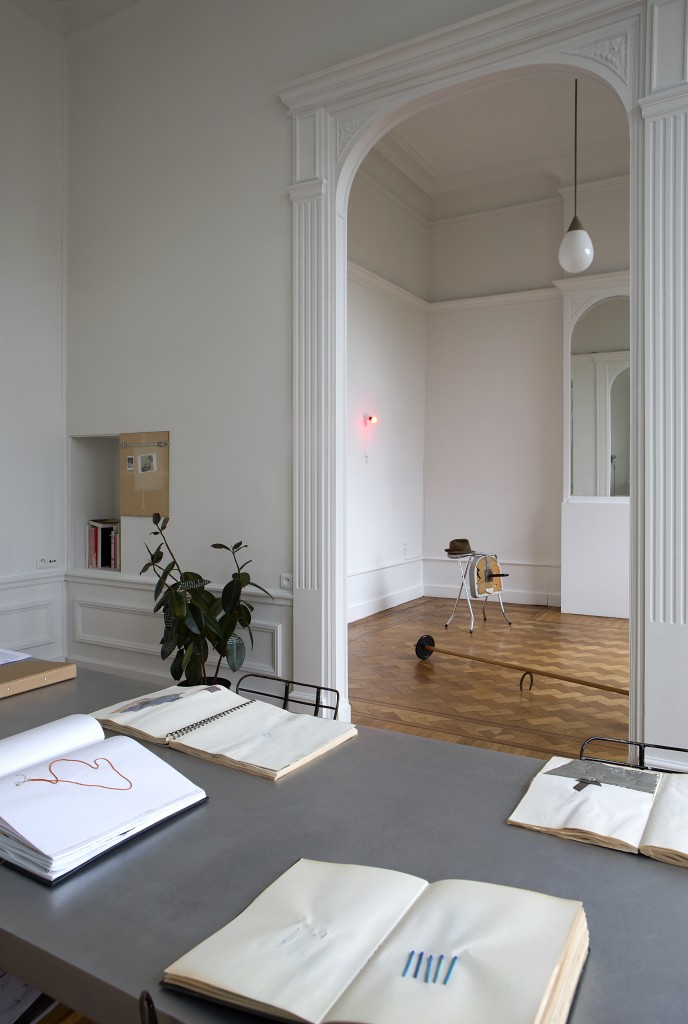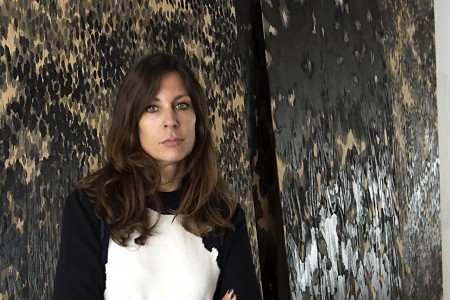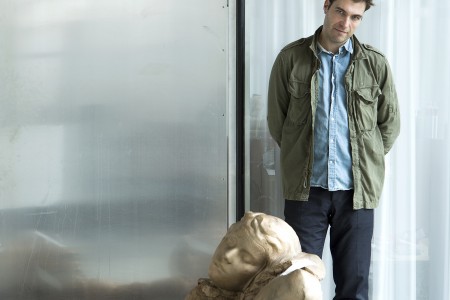Art Studios Belgium I – Pieter Vermeersch
By courtesy of Luster (www.luster.com)
Pieter Vermeersch (b. 1973) lives in Vorst and works in Haren, near Vilvoorde. His studio occupies an entire floor of a former factory, which used to be a venue for raves. “That’s how I learnt about the building,” he explains. “When I was looking for a studio and home in Brussels after my studies at the HISK in Ghent, I suddenly remembered those parties. So I rang up the person who was responsible for the building and he happened to be interested in renting out the spaces to artists. I was very fortunate, I think. Initially I turned the space into a loft, which was half apartment, half studio. I lived and worked there for ten years.” Vermeersch has since moved into a 19th century townhouse in Vorst where he has been living for six years. The house was built for a beer brewer and you can still see his portrait in the stained glass window in the entrance hall. Pieter and his wife, Lilou Vidal, now rent the house from the Belgian artist Marianne Berenhaut, who moved to London temporarily. Lilou uses the ground floor of the house as an office. She used to have an art gallery in Brussels but now runs the Bureau des Réalités, a not-for-profit project space where art is extracted from the commercial gallery context. Lilou organises exhibitions, encounters, discussions, actions and performances. “I don’t intervene in her artistic programming. Of course, we do discuss it frequently. Likewise, she gives constructive criticism on my work. Our life is all about art.” This is not surprising for Pieter, as his grandfather José, his father Rik and two of his brothers, Tinus and Robin, are also artists.
Pieter Vermeersch went to art school in Bruges, studied at Sint-Lucas in Ghent and graduated from the HISK in 2009. He is represented by Greta Meert Gallery (Brussels), Galerie Perrotin (Paris/Hong Kong), Carl Freedman (London), Team Gallery (New York) and ProjecteSD (Barcelona). He earned a reputation for himself with his monumental paintings, in which the colours gradually shift and perfectly blend in with each other. His paintings are based on quasi-abstract snapshots of a car window, an architectural element or a sunrise. “I start by creating a negative of the photo and reversing the colours to make the reality unrecognisable.” Pieter then transposes this image to his monumental photo-realistic paintings, which he creates on canvas as well as in-situ on walls. He transposes even the smallest colour nuances in the manipulated photo into paint. That is why Pieter always lines up his mixing cups, in which he carefully prepares these gradual colour transitions. “You cannot see the difference between the two colours with the naked eye. But I know exactly how the colours relate to each other. My approach is very analytical and rational. I paint like a printer, converting a photo into a painting. The photo takes on an existential meaning, because it is transformed into paint. The object becomes a subject. I have to complete this type of work in one day because otherwise the oil paint starts to dry and then the colours can no longer dissolve into each other.”
Peter always tests his colour match with his finger on the photo. That is also how he had the idea to paint on these photos, like artwork. “The actual photo represents not just one moment in time but millions of potential moments. The time and space references of the image have been completely wiped out. By adding paint with my finger, I reactivate the photo to create a legible moment. I bring the image back to reality.” His studio also houses various samples of natural stone in colours with endless depth and beautiful veining. “Natural stone is a material echo of time. What can I add, as a painter, to a sublime a marble like this one, which is millions of years old?” Vermeersch searches for the answer by painting a new layer onto this piece of vast geological history, a history you can read in every stone. He traces a new path of time onto this material using direct, painterly gestures. The result is a sublime experience of infinity.
